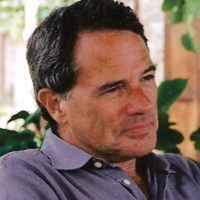
When the United States entered the Second World War in December 1941, thousands of First World War veterans had yet to recover from their physical and mental wounds. “Today, twenty-five years after the end of the last war,” Fortune magazine reported, “nearly half of the 67,000 beds in Veterans Administration hospitals are still occupied by the neuropsychiatric casualties of World War I.” In World War II, 25 percent of all battle casualties in the U.S. armed forces were psychological. From that number came most of the American soldiers who deserted.
There were 50,000 American deserters, whose experiences have been erased from the history of what Gen. Dwight Eisenhower called the “crusade in Europe.” Few if any soldiers deserted in the Pacific. They were not braver, and their conditions were no easier. There was simply nowhere to desert to on Japanese-held islands.
As former deserters die along with other veterans with the passage of time, we might remember them for a moment this Memorial Day. Their story is part of the war. They fought. Many won decorations for courage. Almost all of them were combat troops in an Army that put only 10 percent of its total force into the frontlines. The rest never saw action. It is a forgotten aspect of American strategy that troops were not rotated by units in and out of battle to give them time to rest, to know the recruits who replaced their dead or captured comrades and to deal with the trauma of constant terror. Many combat veterans who fought resented the 90 percent who spent their time in the rear, sleeping in comfortable beds and enjoying the company of French and Italian women.
Members of the First U.S. Infantry Division landed in North Africa on November 8, 1942, in the first test of American military power against the Germans. They fought until the Germans surrendered in Tunisia the following May. They invaded Sicily three months later. In June 1944, they were among the first troops to hit the Normandy beaches into the face of ferocious German counterfire. Without rest, they drove across France and fought in the Hürtgen Forest, the Ardennes, the Battle of the Bulge, and the Siegfried Line. They suffered almost 20,000 casualties, a loss rate of more than 100 percent for their original contingent of 15,000. Some were bitter that other units did no fighting at all, while they never rested. A minority reacted to the constant strain by shooting themselves in the foot or running away.
It is not up to us to judge them. Dr. Allen Towne, a First Division medical officer, wrote in his memoir Doctor Danger Forward, “It is hard for anyone who has not been exposed to long periods of hard combat to understand what this can do to even the best units.”
Few American boys of the “greatest generation” were prepared psychologically for war. Psychiatrists deferred enlistment for more than 1.7 million men before training began. Those who saw action nonetheless broke down in such numbers that psychiatric units were stationed in forward medical-aid stations to help traumatized men back to the front. The U.S. published a booklet called Psychology for the Fighting Man, Prepared for the Fighting Man Himself in 1943 as a soldier’s guide to mental well-being. Its observations were telling. Two stand out:
“Each man, no matter how strong mentally and physically, has his limits beyond which the strongest will cannot drive him.”
“There are a few men in every army who know no fear—just a few. These men are not normal.”
One soldier who won both the Silver and Bronze Stars for bravery before he deserted, Sgt. Alfred Whitehead, wrote of unexpected brutality combat: “We sometimes accidentally killed whole families while clearing out buildings: you don’t have time to ask who was in the cellars when you tossed hand grenades in them ... Sometimes, too, a little girl or boy would come running out with one or both arms blown off, crying hysterically and wild with fear.”

About half of the deserters were captured and court-martialed. Forty-nine were sentenced to death, but only one, Pvt. Eddie Slovik, was actually executed. The rest served prison sentences “at hard labor” and were dishonorably discharged. Many remained in Europe, where they changed their names and started new lives.
Americans who deserted from the wars in Vietnam, Iraq, and Afghanistan need to know this Memorial Day that 50,000 men of that great generation did what they did. Every war produces heroes, casualties, and deserters.
Deserters who survived the Second World War left their comrades buried in Europe. A.E. Housman, writing long before, expressed their regret:
My dreams are of a field afar And blood and smoke and shot.There in their graves my comrades are, In my grave I am not.
I too was taught the trade of man And spelt the lesson plain;But they, when I forgot and ran, Remembered and remain.




